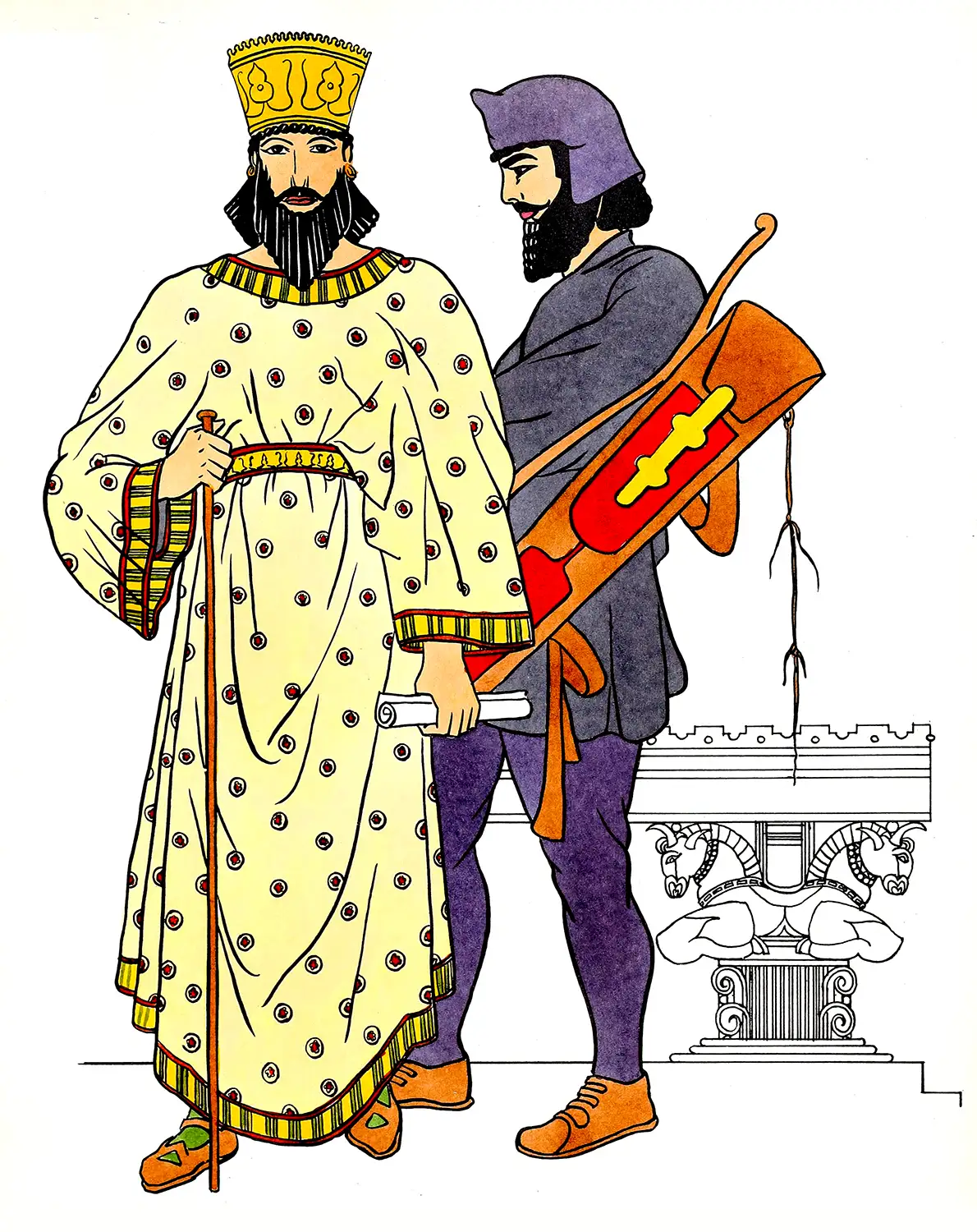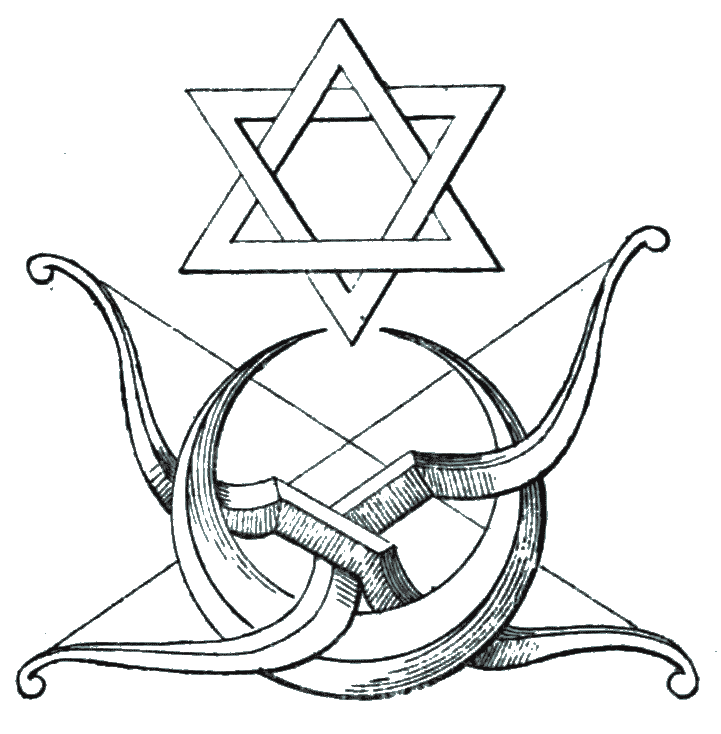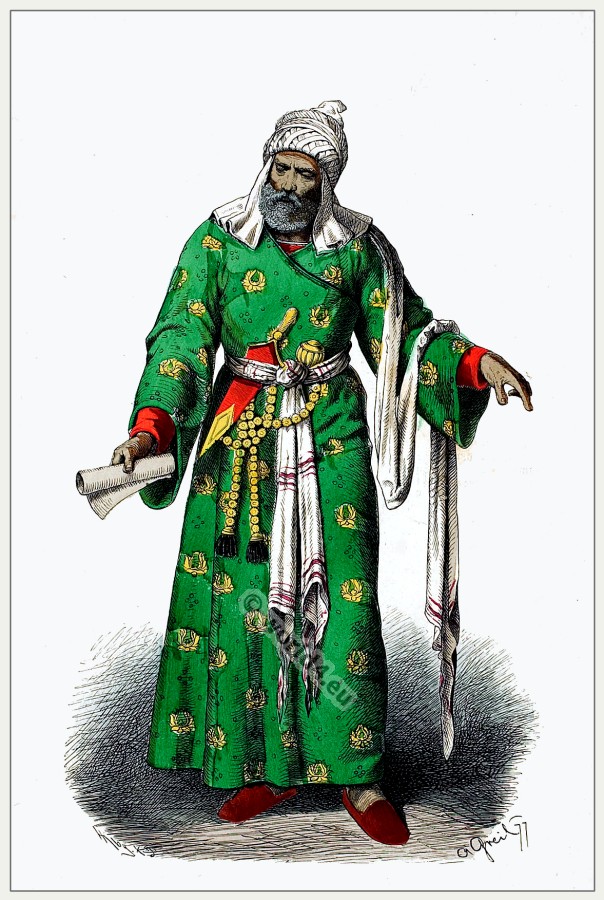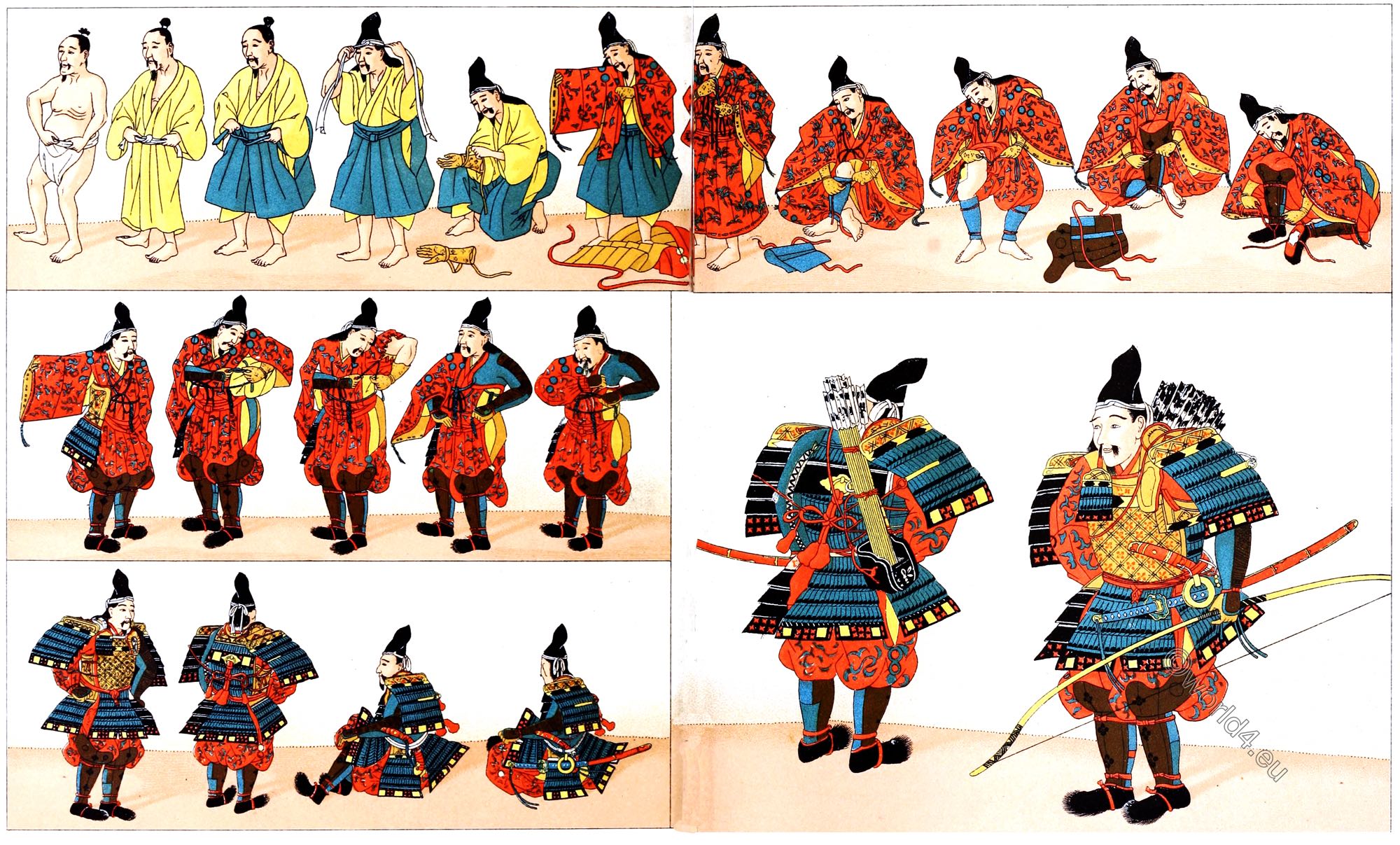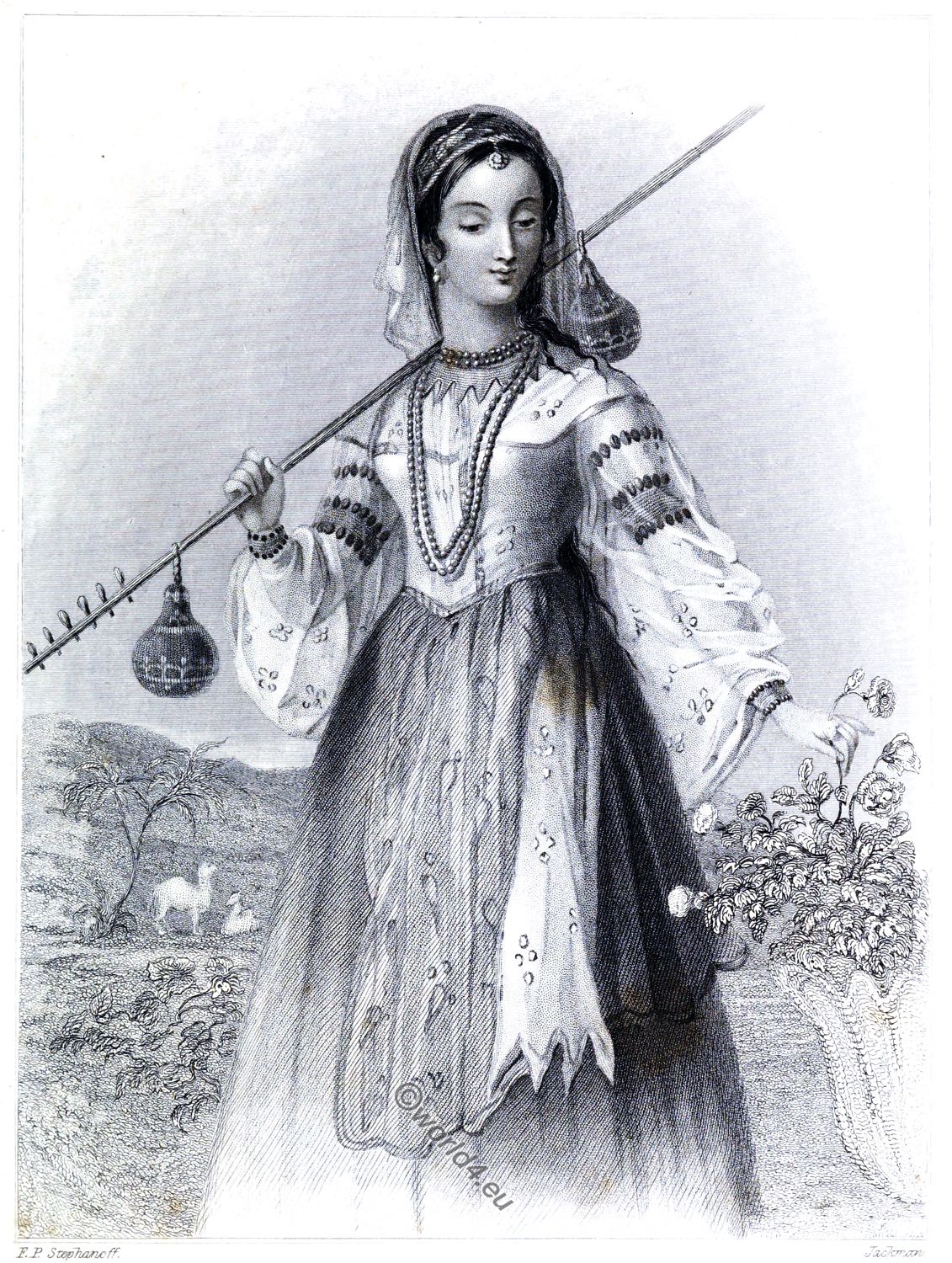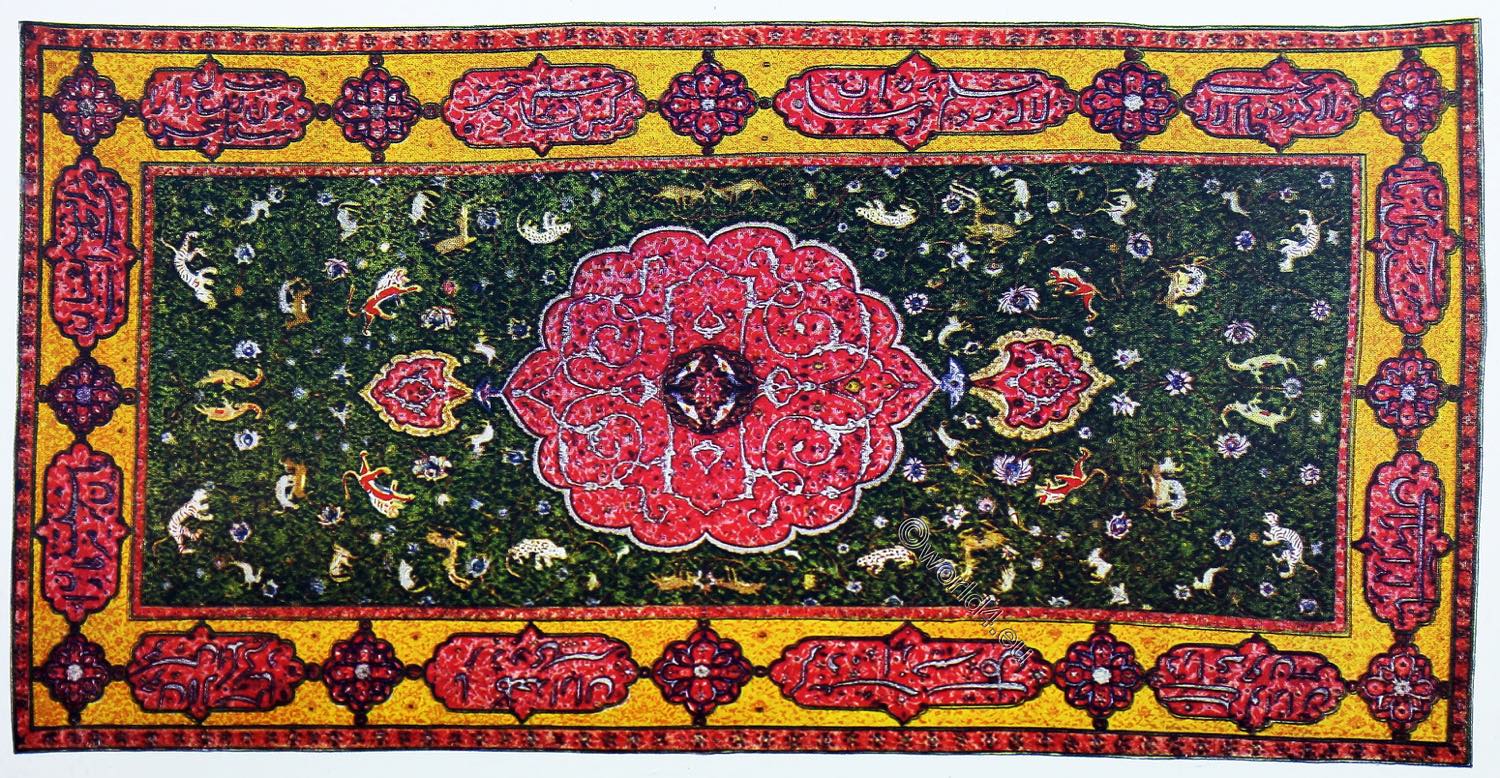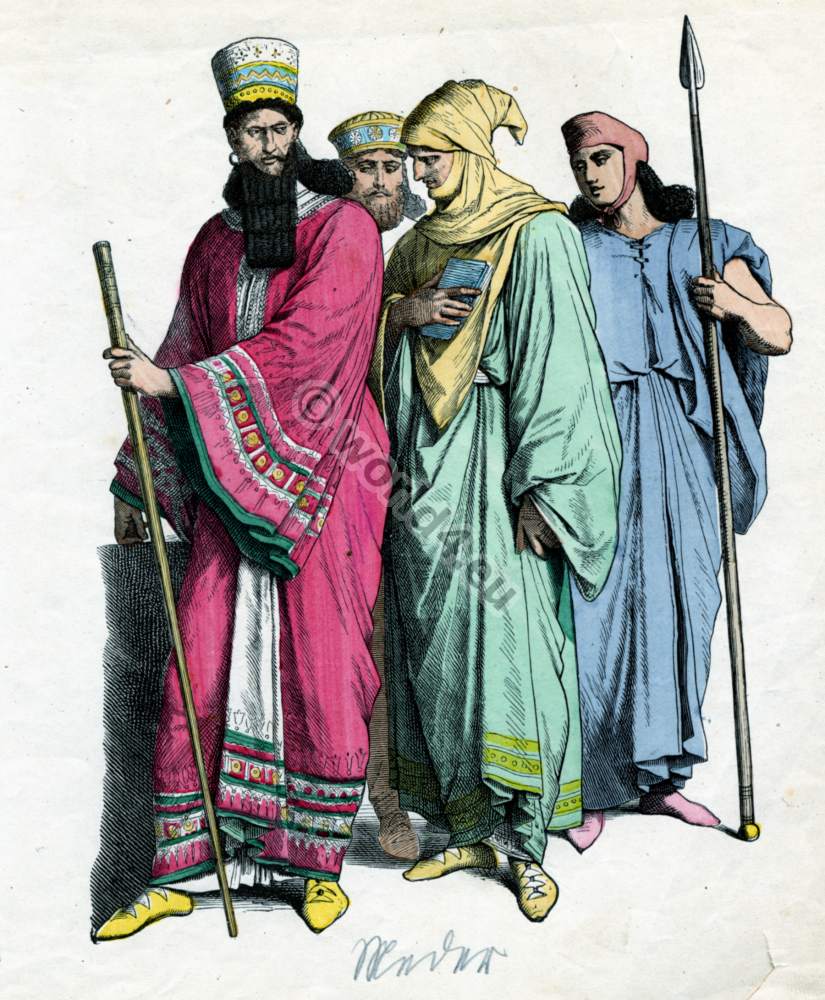PERSIAN
PLATE NO. 6
The ancient Persians lived in the same part of the world as did the Assyrians — the district today called Asia Minor. It will be clearer to us if we know that it is the country of the Hanging Gardens of Babylon, of Daniel and the Lions, and of the Bible. The Persians, who conquered the Assyrians, were the first nation in the history of costume to have coats and trousers somewhat like those of today. Since the figure on the right is shown wearing both these garments, let us start with a description of him.
Persian archer
He is wearing a hat that is called the “Phrygian bonnet”. The name comes from the country of Phrygia, *) an ancient name for a section of Asia Minor. Its shape is like the half of a football with the peak leaning forward and a flap hanging down behind to cover the back of the head. This bonnet is made of soft leather, though it was sometimes made of wool or felt. It was worn a great deal by the people of that time, and has been brought down to modern days in various forms, probably because it is such a natural, easily made covering for the head.
*) Phrygia (ancient Greek Φρυγία) is the ancient name of a region in western central Asia Minor in modern Turkey. This landscape is named after the Phrygians, among whom Phrygia was the heartland of a large empire in Asia Minor, which probably reached the height of its power in the 8th century BC under King Midas.
The coat worn by the archer is also made of wool, though the same type of coat was quite often made of different materials. It is cut on a simple rectangular pattern, is open down the front, and has long loose sleeves that are a part of the coat and not sewn in separately as sleeves are on the coats we wear to-day.
The trousers are long and loose, except at the ankles. Though it is impossible to see how they are kept up, we can imagine them to be tied at the waist either with a draw-string (like modern pajamas) or a belt of some description.
His leather shoes are fastened with straps, which cross the foot and tie on the side.
Under his left arm he wears a large leather quiver wit?i a flap, which closes it and protects the arrows.
Persian king
The king is wearing a costume that looks more comfortable than the archer’s. It may be compared to a modern kimono except that it is not open down the front. The Persians called it a “robe of honour”, and it was worn only by important persons. It was made of linen or crude silk and was unusually decorated all over with circles, stripes, checks, or squares of red, green, or blue. It was very long, and had wide sleeves which, like the archer’s coat sleeves, were not sewn in. When the belt was fastened around the waist, the robe was pulled up over it on each side. How this was done can be seen by studying the hem and belt on the king.
The king is shown wearing soft sandals much like those shown on the Assyrian plate. These were often made from materials other than leather. He is carrying a high staff and is wearing earrings. Like his archer he is wearing a long beard which is carefully curled and combed.
Source: Museum Extension Project. History of Costume.
Continuing
Discover more from World4 Costume Culture History
Subscribe to get the latest posts sent to your email.

